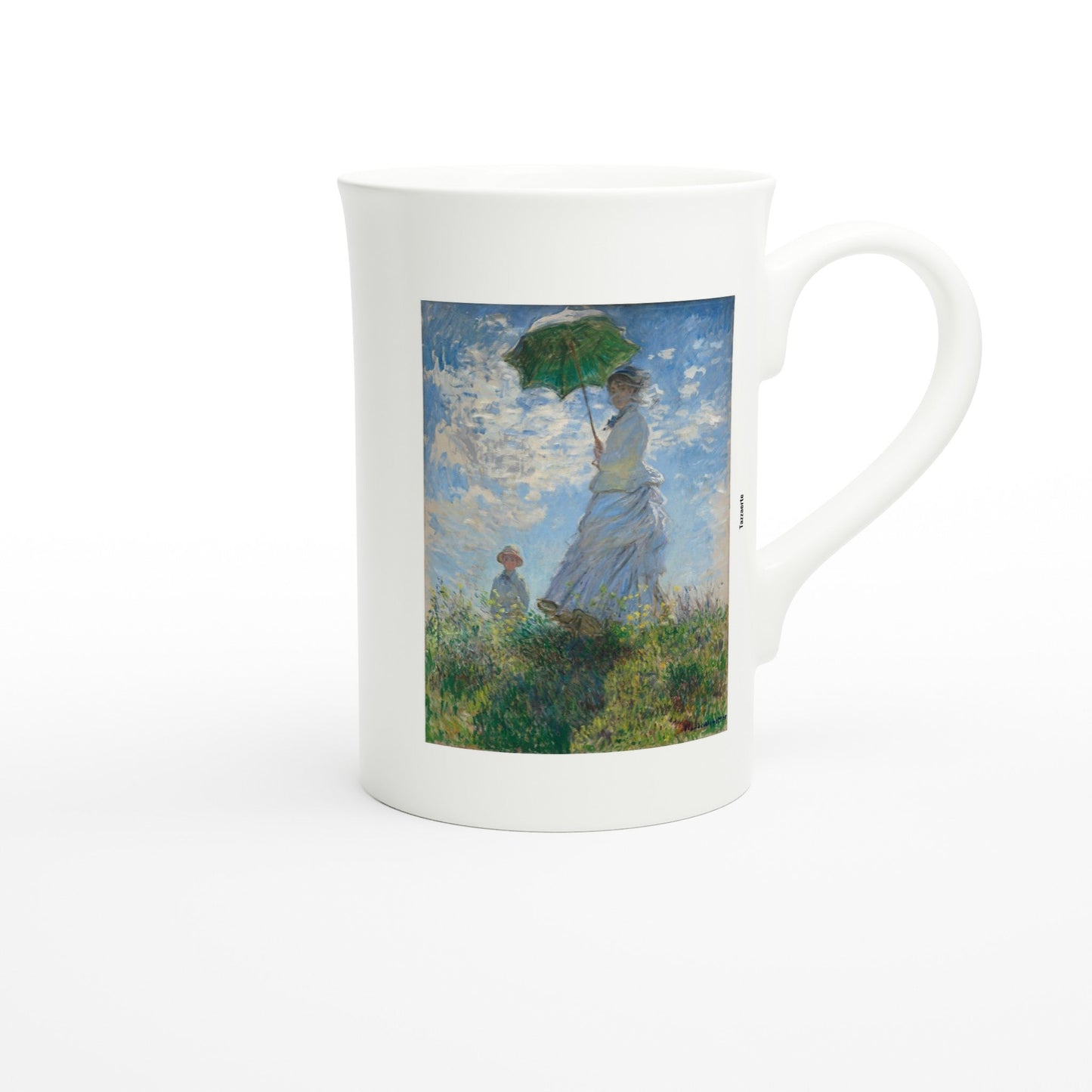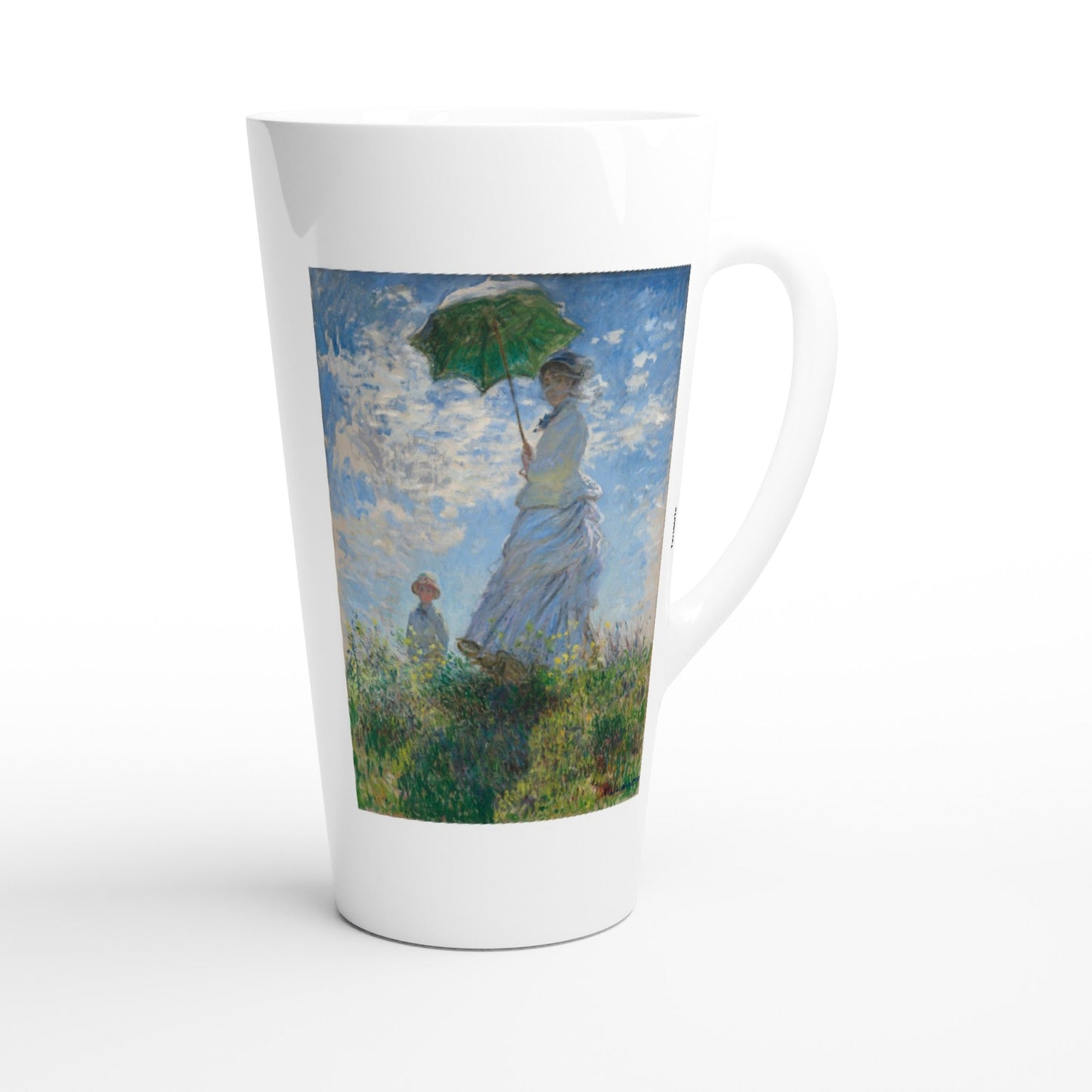Tazzarte
Monet's 'Woman with a Parasol' Mug: Impressionist Art for Your Cup
Monet's 'Woman with a Parasol' Mug: Impressionist Art for Your Cup
Couldn't load pickup availability
Share
Introducing our stunning collection of Impressionist Ceramic Mugs featuring Claude Monet's masterpiece, "Woman with a Parasol – Madame Monet and Her Son." Each mug is thoughtfully crafted from high-quality ceramic, while the petite 10 oz option is exclusively made of porcelain for an elegant touch. Available in 10 oz, 11 oz, 15 oz, and 17, these mugs combine functionality with artistic beauty, making them perfect for your morning coffee or evening tea rituals.
Product Details:
- Material: High-quality ceramic for all mugs except the 10 oz mug, which is exclusively crafted from porcelain for a premium feel.
-
Capacity Options:
- 10 oz (porcelain)
- 11 oz (standard size, with colored interior, rim, and handle)
- 15 oz
-
17 oz
- Care: Dishwasher and microwave safe for convenience.
- Safety: Lead-free and BPA-free for worry-free use.
-
Design: © tazzarte.com - Exclusive artwork integration.
- Right Side View: Claude Monet, Woman with a Parasol - Madame Monet and Her Son, set off Brandname "Tazzarte" and Quality Seal "Tazzarte" in small print, arranged vertically.
- "Left Side View: Claude Monet, Woman with a Parasol - Madame Monet and Her Son
Artwork: Claude Monet, Woman with a Parasol - Madame Monet and Her Son, 1875, oil on canvas, 100 x 81 cm (39 3/8 x 31 7/8 in.), National Gallery of Art, Washington, DC, Collection of Mr. and Mrs. Paul Mellon, ©: CC0 - Public Domain.
Monet's "Woman with a Parasol – Madame Monet and Her Son": A Timeless Study in Light and Color
Claude Monet’s painting "Woman with a Parasol – Madame Monet and Her Son," created around 1875, stands as a quintessential example of the Impressionist movement, masterfully capturing the ephemeral dance of light and color. In this iconic work, Camille Monet stands elegantly on a hill, her son Jean slightly obscured behind her, embodying a moment of familial tranquility caught in time. Monet, with his characteristic haste, employed swift, decisive brushstrokes to immortalize this scene, infusing it with the vibrancy and spontaneity that defines Impressionism.
The sky in the painting is sketched with chaotic strokes of blue and gray, with deliberate areas left uncovered, not just from Monet's rush but as a testament to the transient nature of the moment captured. The grass below is rendered with denser brushwork in greens, blues, and browns, interspersed with delicate dabs of yellow suggesting buttercups, whose reflections subtly grace Camille’s sleeve. The luminous white strokes on her attire capture light in a way only Impressionism can, highlighting Monet's innovative technique of light reflection.
A Moment in Art History
Monet's move to Argenteuil, facilitated by Manet, marked the beginning of an extraordinarily productive period in his career. It was here that Impressionism thrived, born from a desire to depict everyday life outdoors, unscripted and full of light. "Woman with a Parasol" exemplifies this ethos, blending figure painting with landscape in a manner that eschewed the stilted conventions of academic portraiture for something far more natural and dynamic.
The Journey of a Masterpiece
The painting's journey through time is as compelling as the scene it depicts. Initially sold to Dr. Georges de Bellio, an early supporter of Impressionism, it passed through several hands after his death, from M and Mme Ernest Donop de Monchy, possibly through the art dealer Paul Rosenberg, to Georges Menier. Its final home was secured when Paul Mellon, recognizing its cultural value, donated it to the National Gallery of Art in Washington, D.C. in 1983. This provenance not only traces the artwork's physical journey but also its rising esteem within the art world.
Reflections on Influence and Legacy
"Isn't it fascinating how this simple family scene has come to represent so much more?" one might ask. Indeed, "Woman with a Parasol" does more than just depict a moment; it captures the essence of Impressionism's impact on art. Its influence can be seen in the fluidity of form and the play of light that later artists adopted, altering the course of modern art. Monet's work here encapsulates a moment of joy, nature, and the fleeting beauty of life, themes that continue to resonate in art today.
Therefore, "Woman with a Parasol" transcends being merely a family portrait; it serves as a testament to the evolution of Impressionism and reflects the rich tapestry of art collecting culture over the centuries. Monet's masterful manipulation of color and light, combined with his evident affection for his family, makes this painting not just an artistic achievement but an enduring symbol of an era, inviting viewers to ponder the transient beauty of life and art alike.
Dr. Walther Fuchs






















